Dear friends,
Our tour took us next to the UNESCO World Heritage Site of Volubilis, where we spent a very interesting morning wandering in the ancient ruins with a knowledgeable guide to give us an idea of what we were looking at. Archaeological excavations of this site began in 1915 and continue to this day. They have exposed a large part of the town (more than 20 ha.), but much remains to be excavated, particularly in the area occupied in the post-Roman period.
A first view of the ruins as we walked towards them
Built in a fertile agricultural area, it developed from the 3rd century BC onward as a Berber settlement before being the capital of the kingdom of Mauretania. It grew rapidly under Roman rule from the 1st century AD onward and expanded to cover about 42 hectares (100 acres) with a 2.6 km circuit of walls. The city gained a number of major public buildings in the 2nd century, including a basilica, temple and triumphal arch. Its prosperity, which was derived principally from olive growing, prompted the construction of many fine town-houses with large mosaic floors.
The shadows of the pillars made for an interesting play of light on the steps, the only part remaining
of the Capitol Building with the sacrificial altar in front of the steps
The city fell to local tribes around 285 and was never retaken by Rome because of its remoteness and indefensibility on the south-western border of the Roman Empire. It continued to be inhabited for at least another 700 years, first as a Latinised Christian community, then as an early Islamic settlement. In the late 8th century it became the seat of Idris bin Abdullah, the founder of the Idrisid dynasty of Morocco. By the 11th century Volubilis had been abandoned after the seat of power was relocated to Fes.
Magnificently constructed walls and pillars of the basilica the interior of which
was divided into three aisles and two apses
Looking at the aisle of the Basilica from the inside
And another view from a different angle showing the intricate brickwork and one of the remaining columns
Remains of some of the houses with the basilica behind
Passageways and arches amongst the houses
One of the 58 oil presses discovered confirming the value of olive oil to the city’s economy
A magnificent circular mosaic with flora and fauna beautifully portrayed
A horse or donkey mosaic with a rider strangely seated backwards
A close up of the face of the rider, the colors brighter after it had been doused with water
The Triumphal arch situated at the end of the main street and overlooking the rolling terrain beyond
with wheat fields, vineyards and olive groves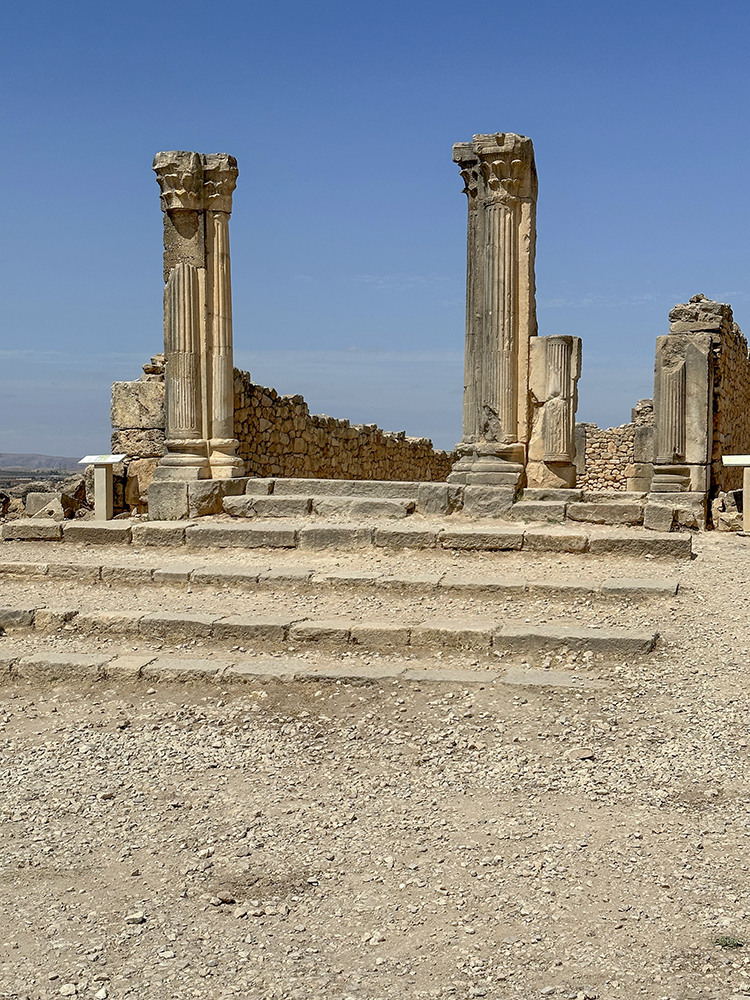
Impressive columns at the end of one of the streets in the aristocratic area
Doorways into the houses in the aristocratic quarter
It was hot and dusty, so this wall of a house provided welcome shade to our group as we learn from our guide
How beautifully moulded and carved is the top of this column
The ruins remained substantially intact until they were devastated by an earthquake in the mid-18th century and subsequently looted by Moroccan rulers seeking stone for building the nearby city of Meknes. It was not until the latter part of the 19th century that the site was definitively identified as that of the ancient city of Volubilis. During and after the period of French rule over Morocco, about half of the site was excavated, revealing many fine mosaics, and some of the more prominent public buildings and high-status houses were restored or reconstructed. Today it is a UNESCO World Heritage Site, listed for being “an exceptionally well preserved example of a large Roman colonial town on the fringes of the Empire”.
Above and below some of the magnificently preserved mosaics found in the houses of the aristocracy
Each mosaic telling a story …
… and the surrounding geometric patterns equally stunning
Two mosaic loops of colored stone artfully intertwined
Substantial parts of an aqueduct which ran parallel to the main street still survive.
This brought water from a spring one kilometer from Volubilis for the city’s baths and fountains
Another view of one of the remaining parts of the aqueduct
Our guide reclining in one of the carved seats, a perfect place to converse with friends,
within a public bath which would have had heated water and adjacent steam rooms
Looking up the main street towards the Tangier Gate, one of several allowing people to enter the city
A closer view of the Tangier Gate
Amongst the mass of stones along the main road, there were several with carved signs which would have indicated what produce was for sale from which shop – shellfish for seafood, a circular loaf of bread, a wine goblet and a bird for poultry.
Looking back down the main street toward the Triumphal Arch
A last glimpse back to the ruins, aware that much more could be excavated
and wondering what other treasures lay beneath
Leaving Volubilis, we travelled just a short five kilometers to the holy city of Moulay Idriss, which is spread over two hills at the base of Mount Zerhoun. It is famous for being the site of the tomb of Idris I, the first major Islamic ruler of Morocco, after whom the town is named.
The Khiber and the Tasga hills at the base of Mt Zerhoun which form the town’s two main districts.
Between these is the mausoleum and religious complex of Moulay Idris.
A closer view of the whitewashed district of Khiber
Idris I(known as Moulay Idris) was a descendant of Muhammad who established himself at Volubilis, a formerly Roman town which by then was mostly inhabited by Berbers and a small population of Judea-Christian heritage. He used his prestige as a descendant of Muhammad to forge an alliance with local Berber tribes (in particular the Awraba) in 789 and quickly became the most important religious and political leader in the region. As the old site of Roman Volubilis was located on an open plain and considered vulnerable, the settlement moved up a few kilometers towards the mountains, presumably around the site of the current town of Moulay Idriss, leaving the old Roman ruins abandoned.
Another view showing both districts and the area of the religious complex
Walking up into the town, we could not help but notice the unusual minaret towering above us
The Sentissi Mosque was built in 1939 by a local man after his return from the hajj in Mecca. It allegedly has the only cylindrical minaret in Morocco. The minaret is covered in a background of green tiles with white Kufic-style Arabic letters spelling out a chapter from the Koran. The mosque is now a Koranic school (madrasa), and is also referred to as the Medrasa Idrissi.
The religious complex with its entrance off the main town square
The zawiya (a religious complex including a mausoleum, mosque, and other amenities) of Moulay Idris is located at the center of town, with its entrance just off the main town square. It is reached then reached via a long passage that leads to the main building. This includes the mausoleum chamber, recognizable from afar by its huge green-tiled pyramidal roof, and a mosque area. It also has a tall minaret with a square shaft, typical of Moroccan architecture. The zawiya is off limits to non-Muslims.
More mundane and indications of everyday life were also abundant – a local selling his grapes
A patient donkey waiting outside his owner’s store
Down a steep staircase was the town’s bakery, where all come to clim their morning loaf
A tasty morsel for everyone to try while we were there.
And of course, there were cats, this one charmed me while we were taking in the sights
So why better way to sign off for this story than with a sweet portrait of a tabby kitten. I hope you have enjoyed this tour through ancient Volubilis and the holy city of Moulay Idriss.
The next journal entry will be about the fascinating and picturesque city of Fes
Until then, wishing you my friends and followers all the very best
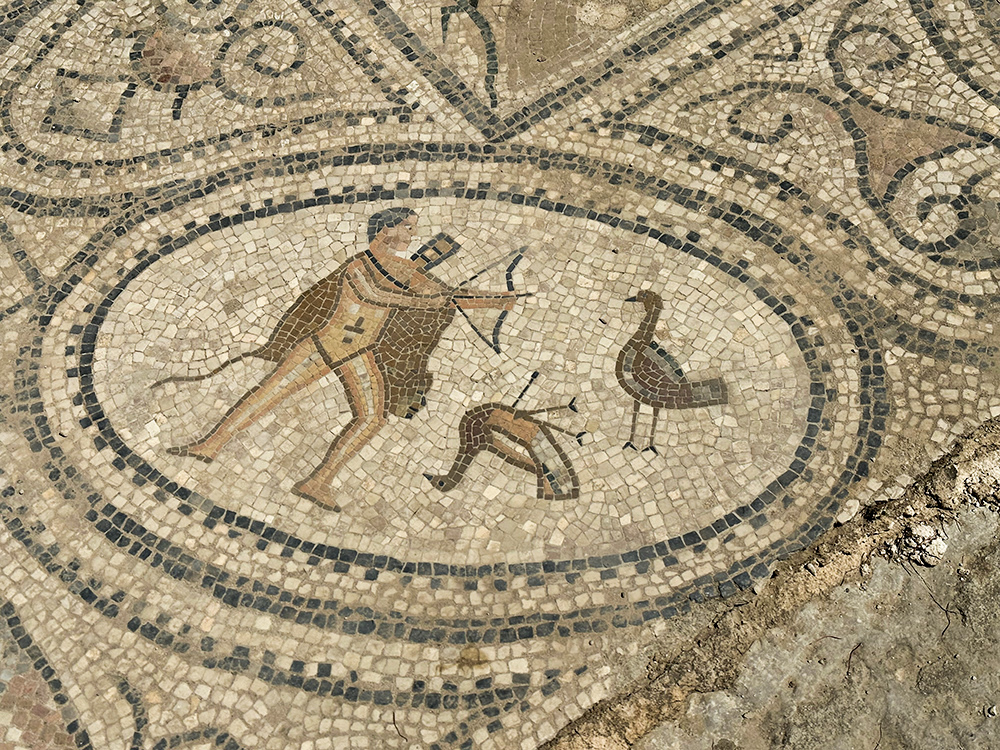
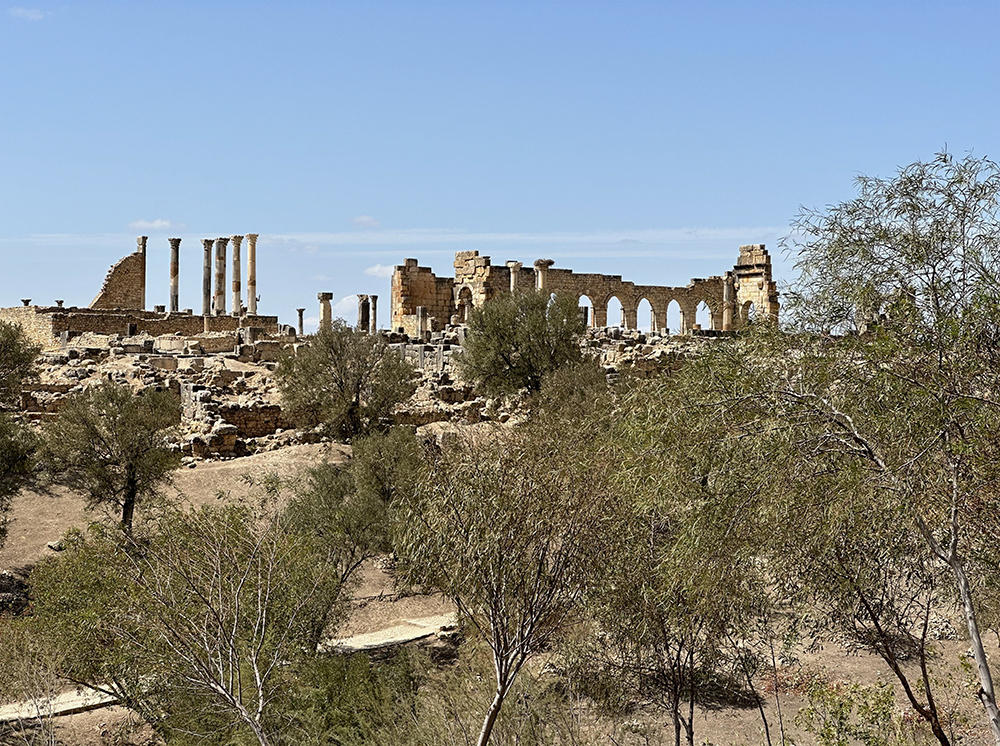
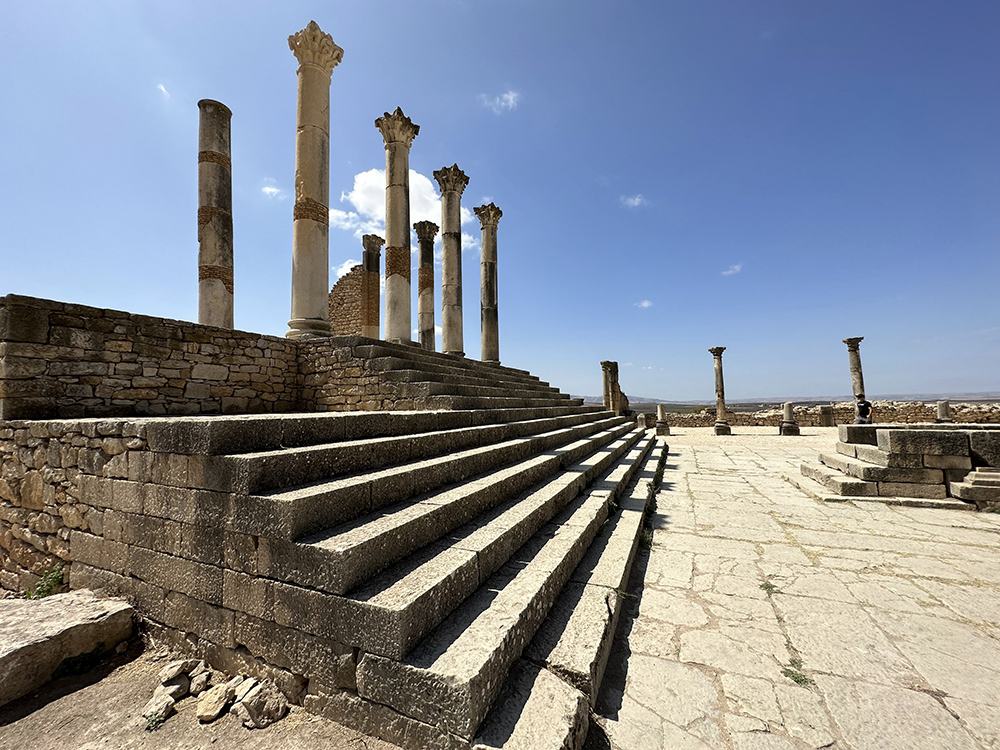
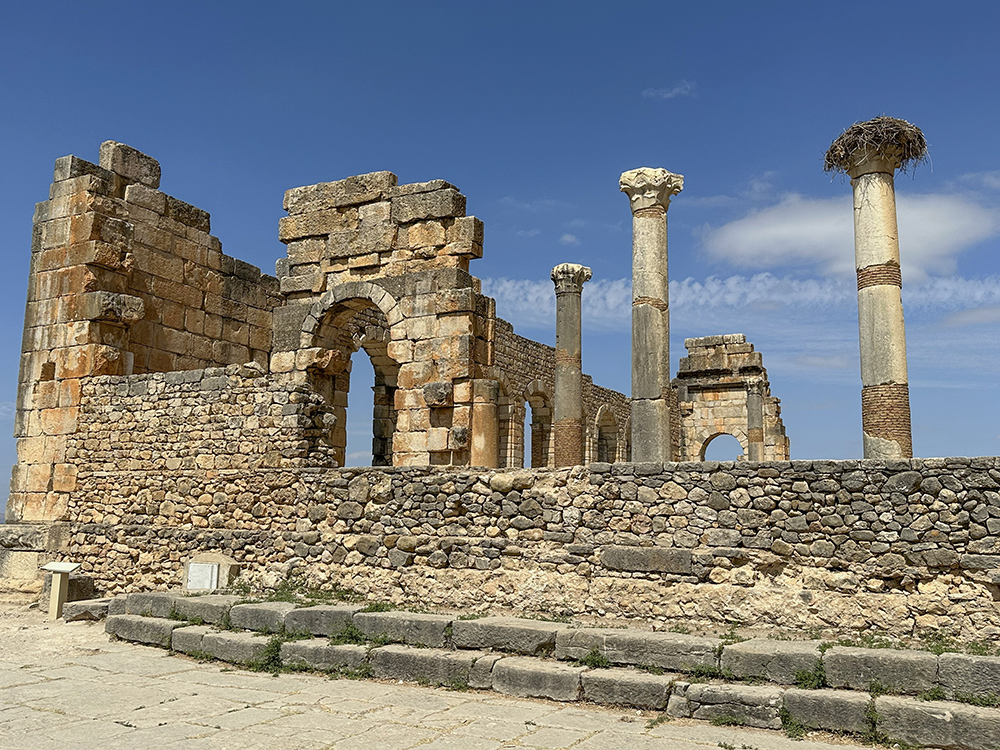
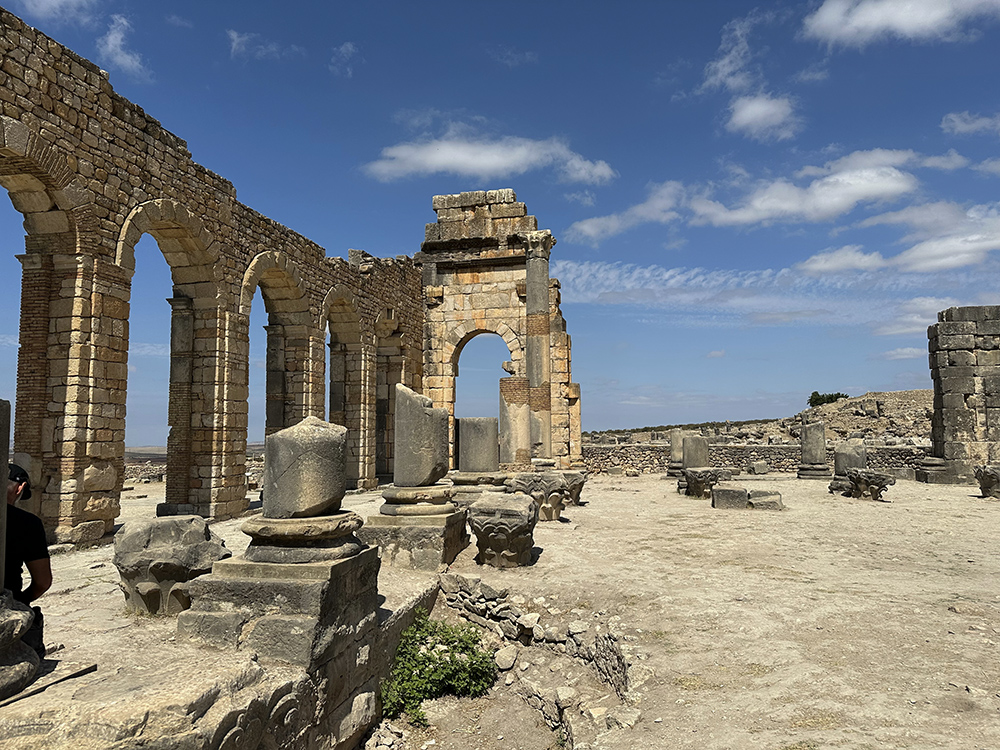
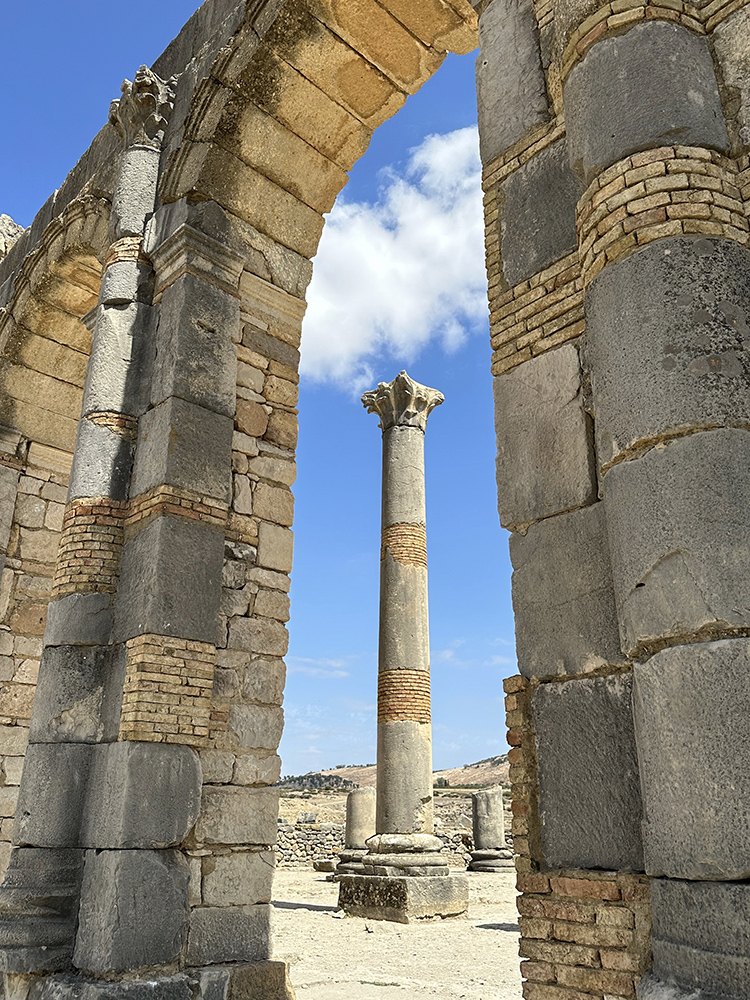
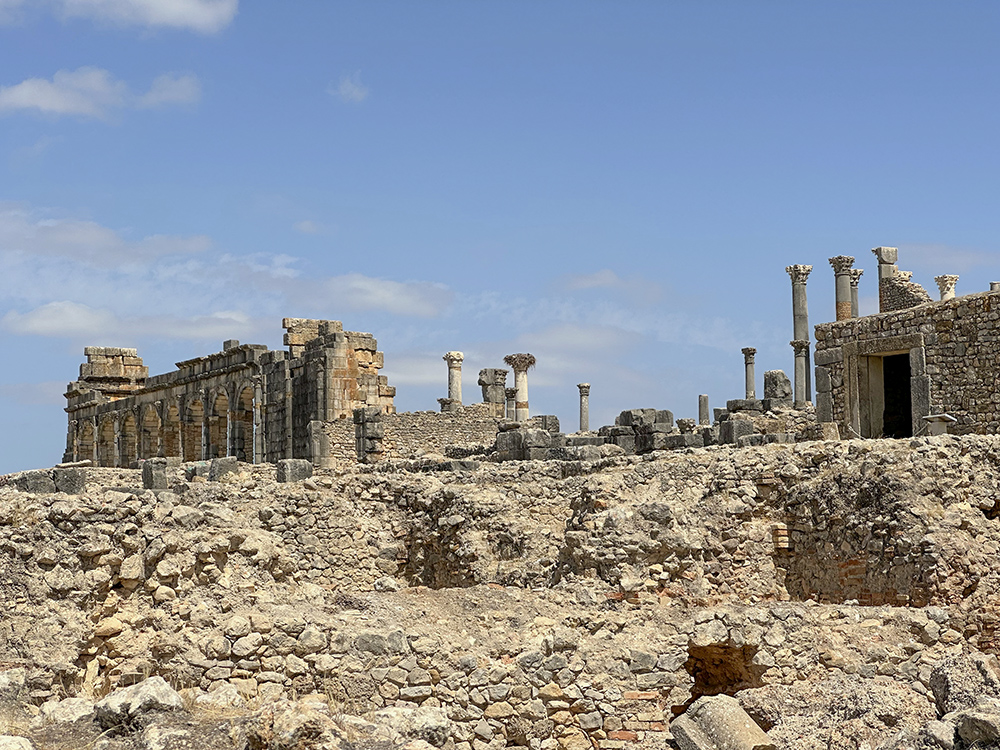
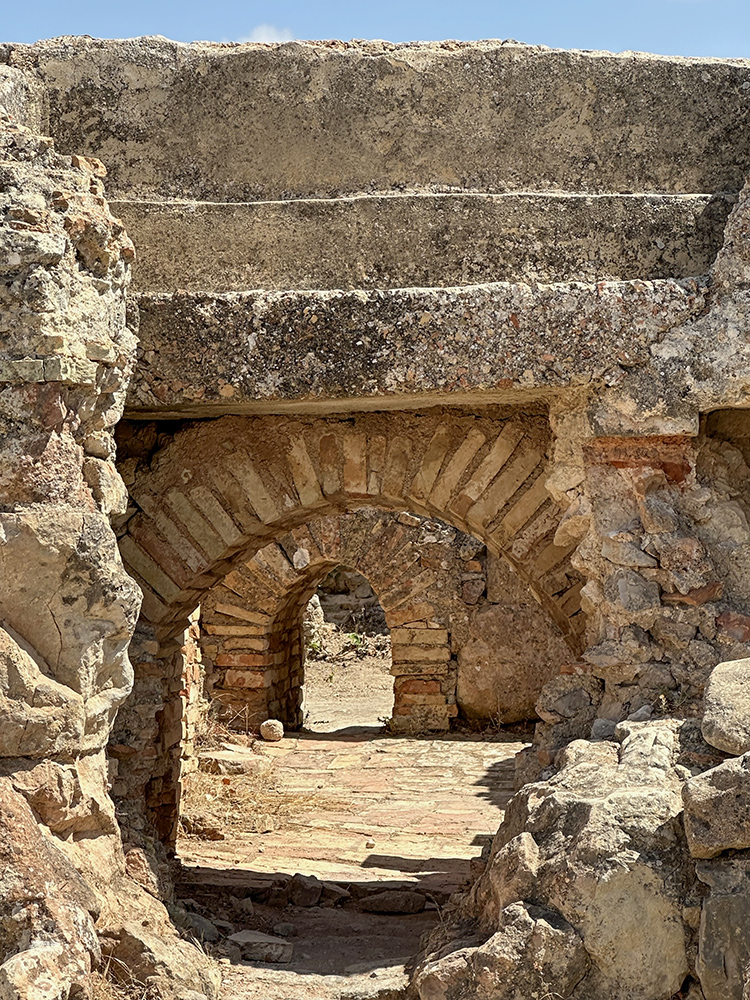
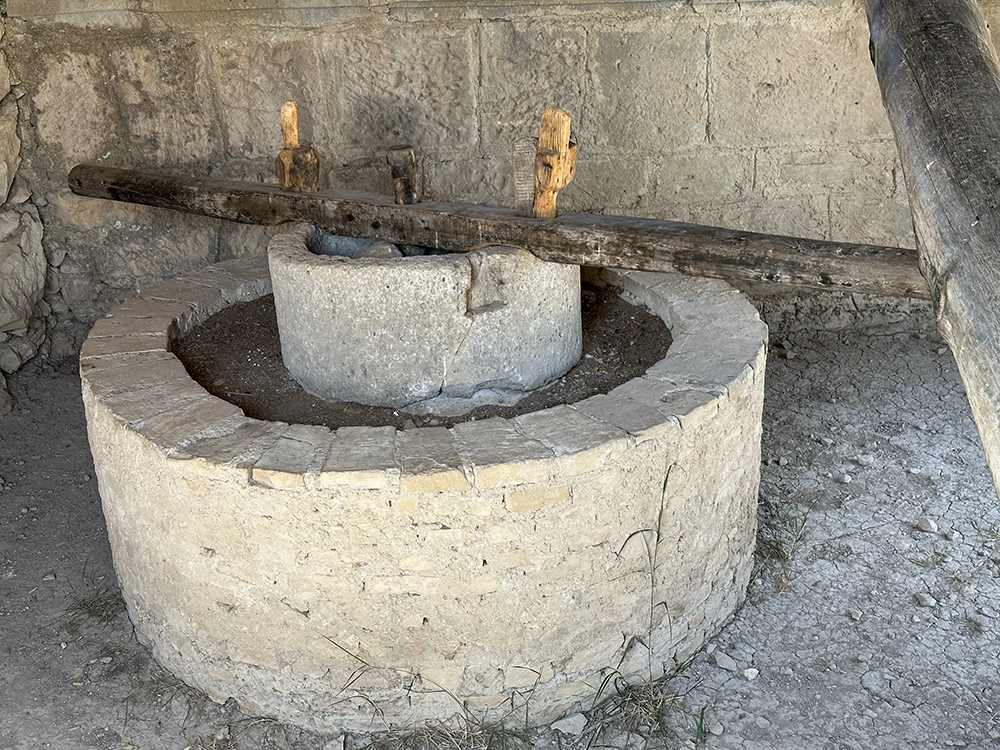
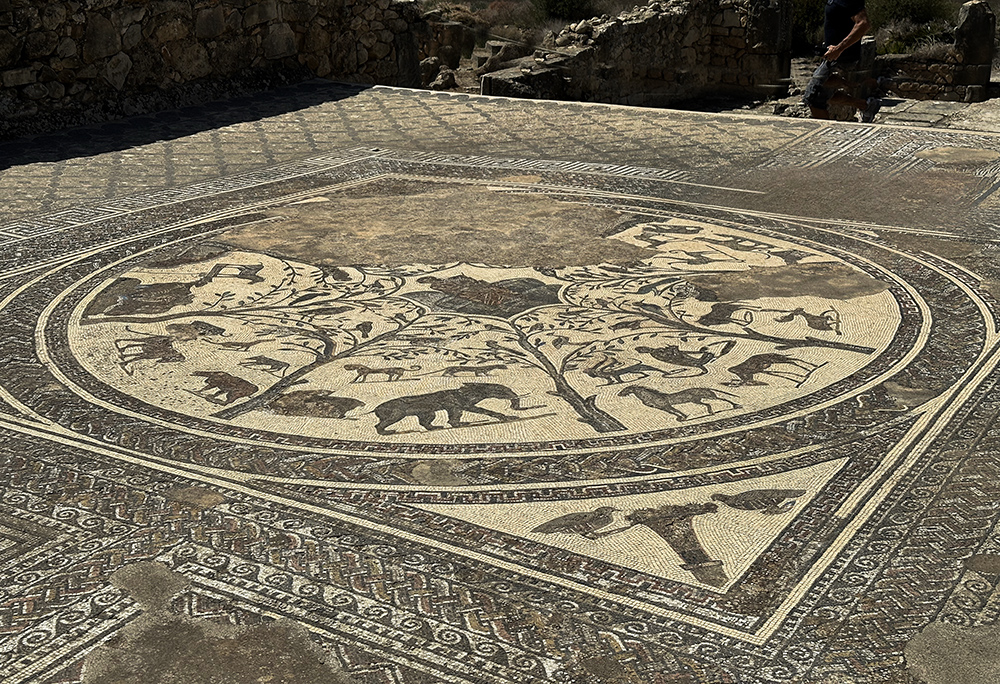
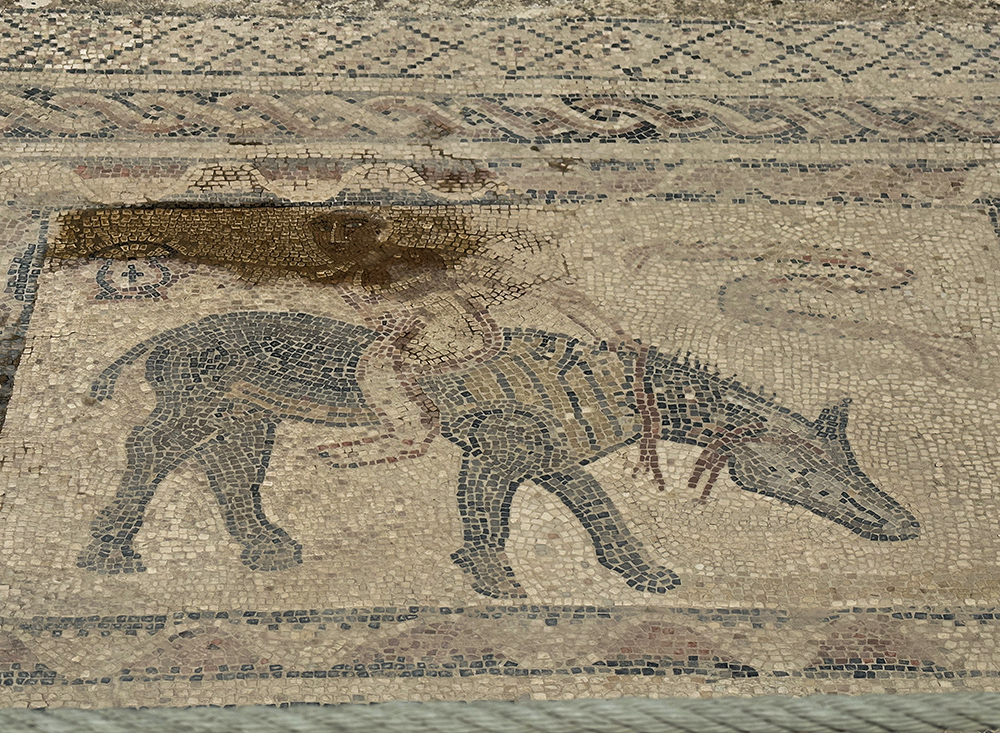
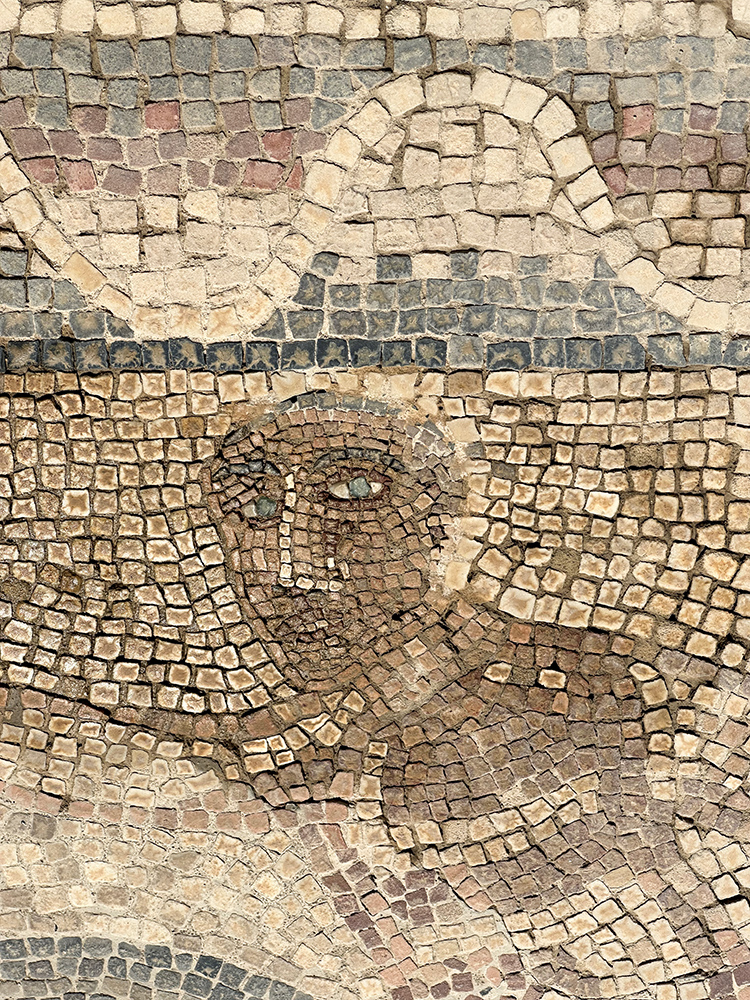
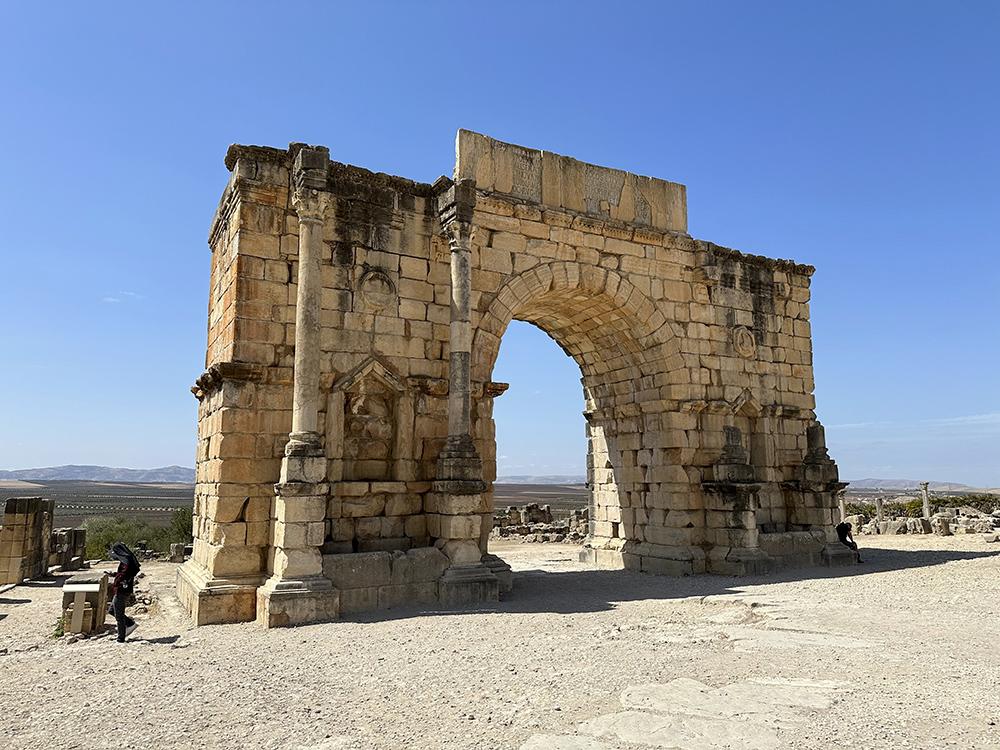
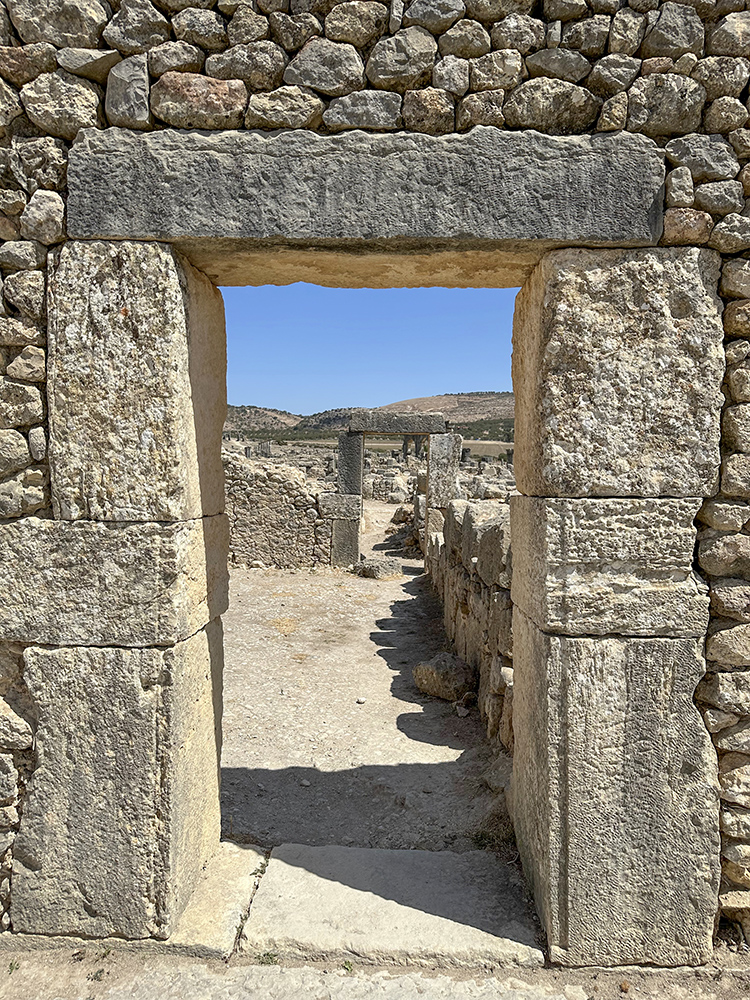
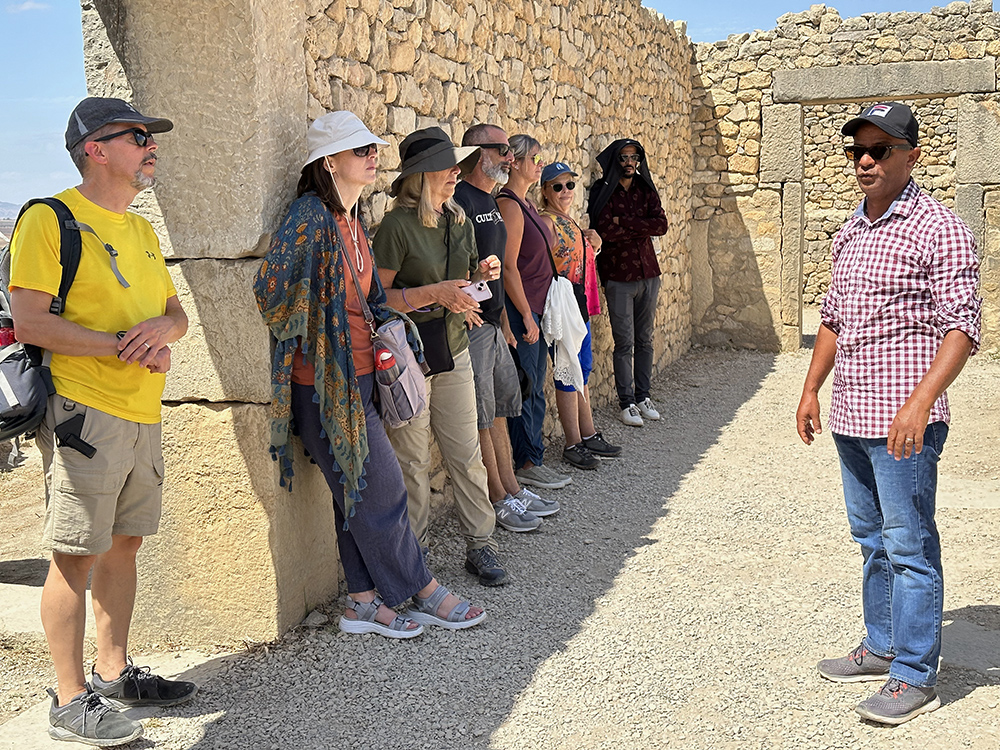
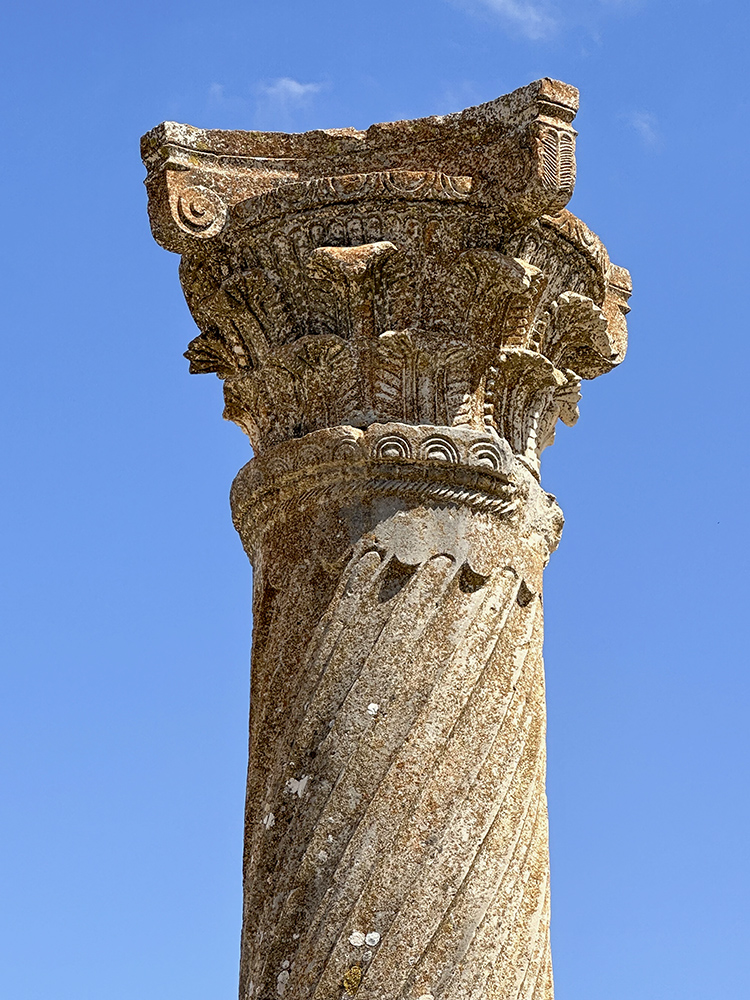
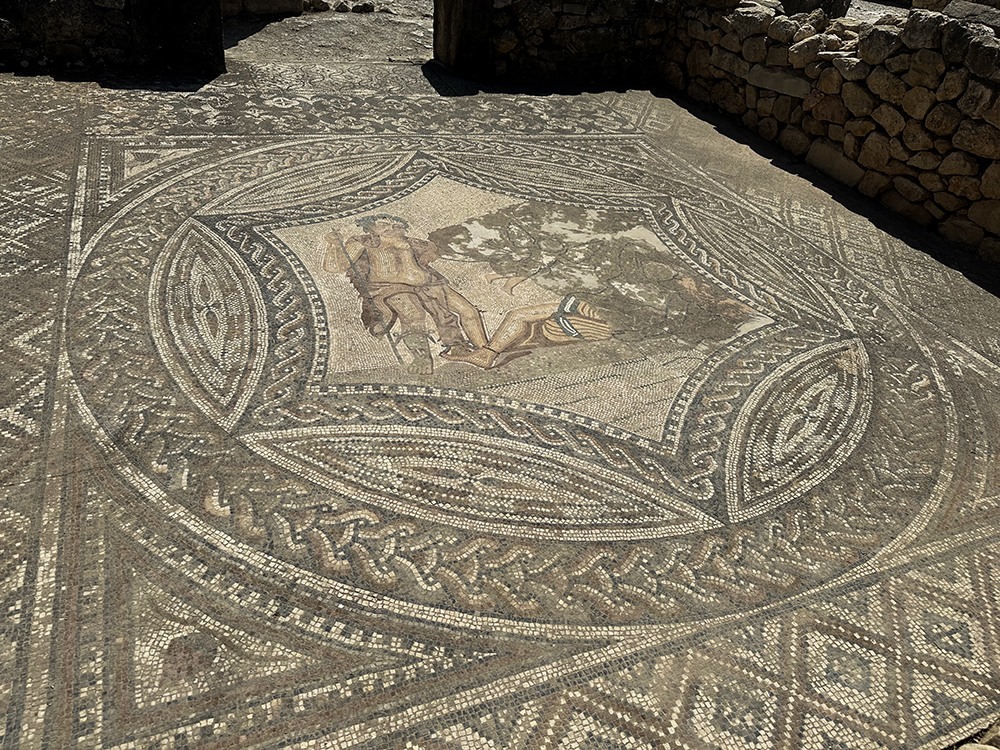
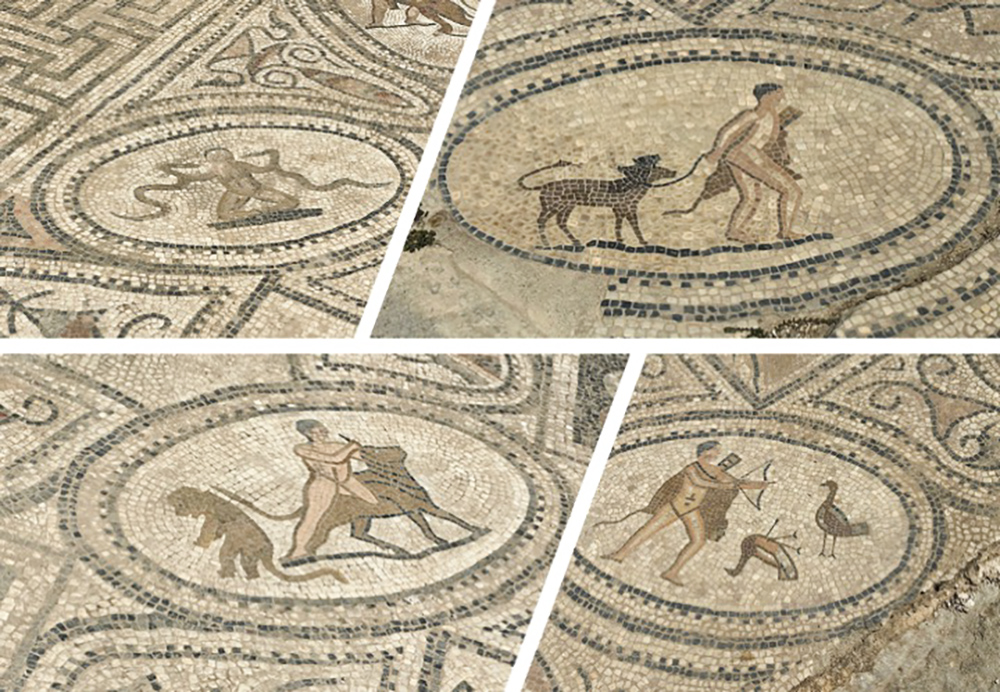
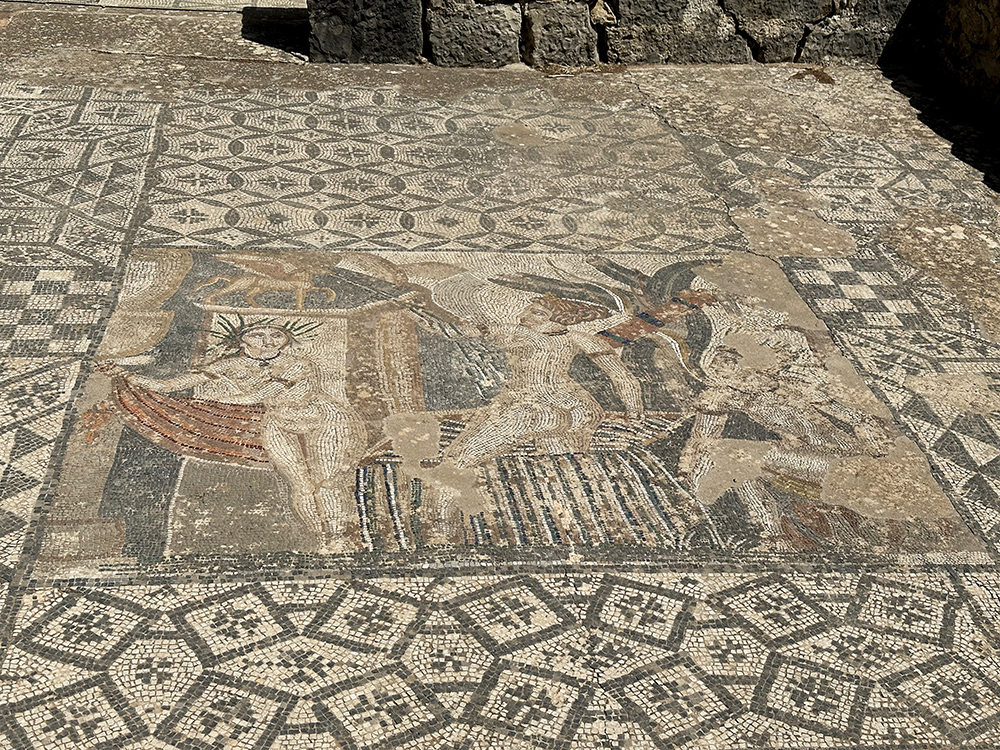
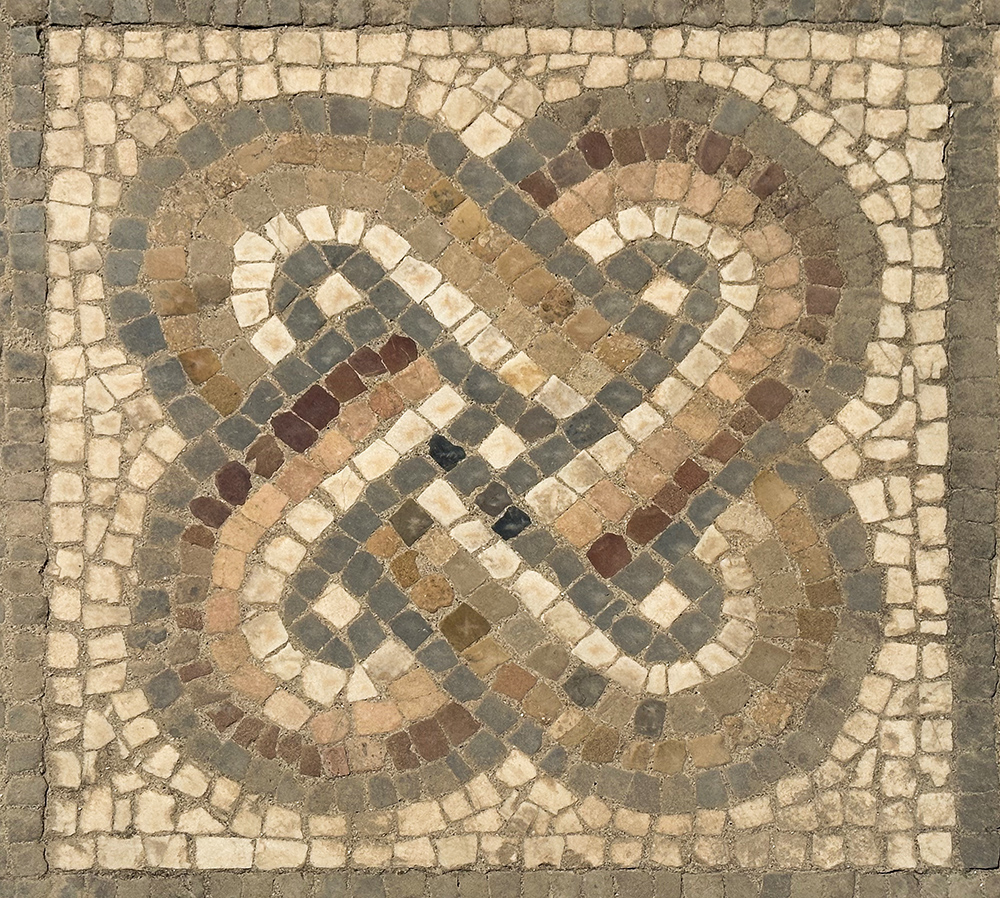
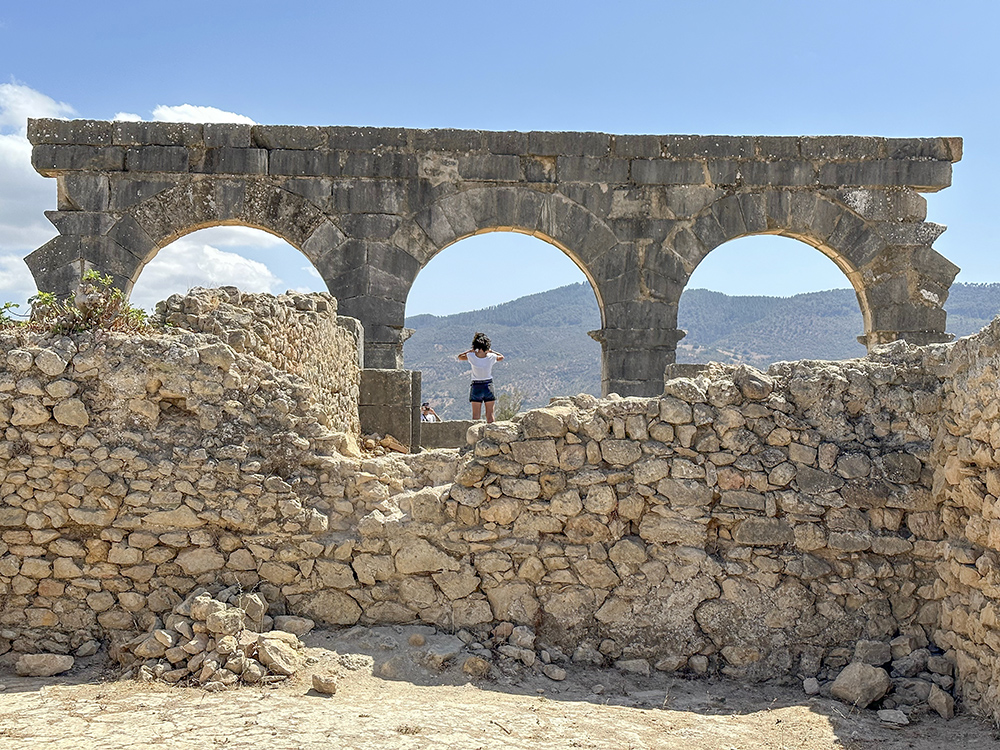
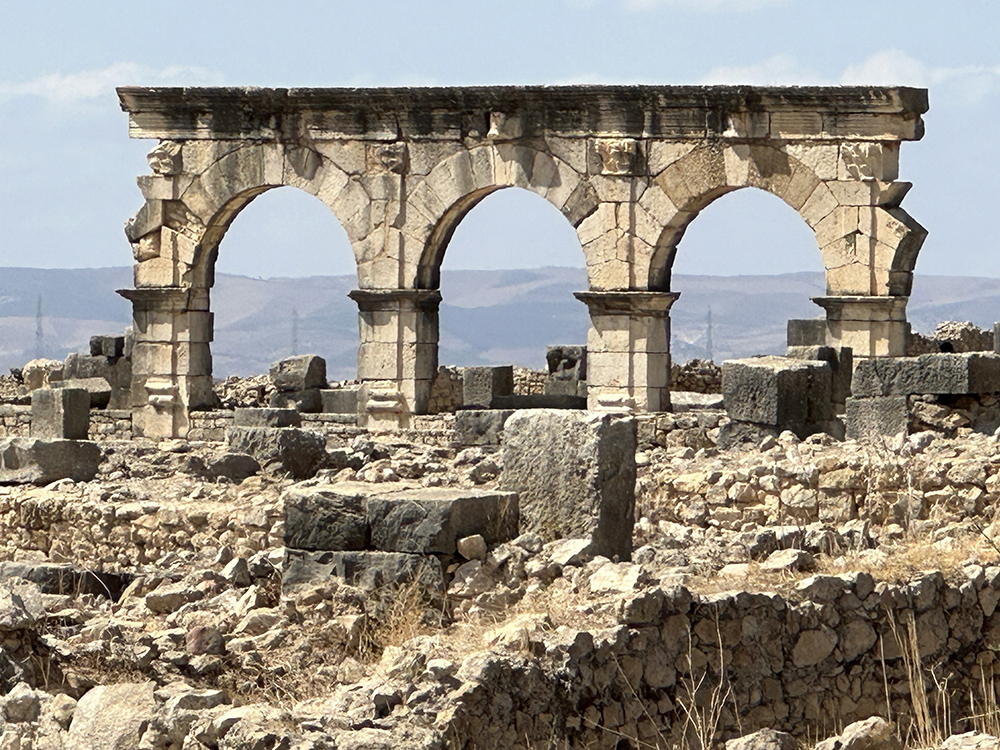
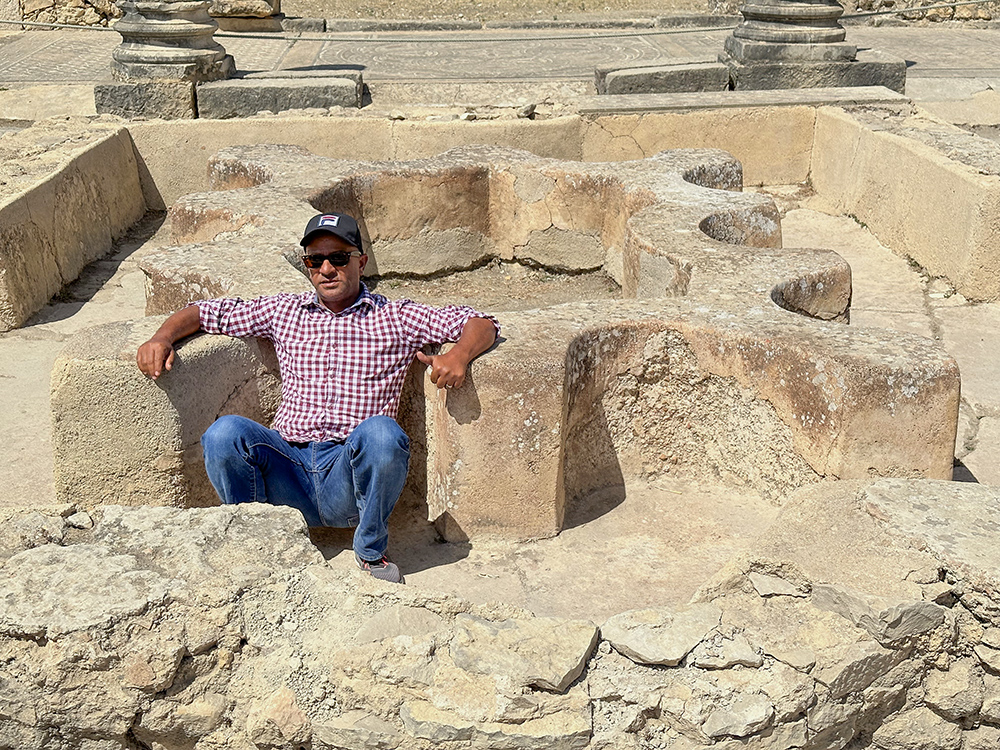
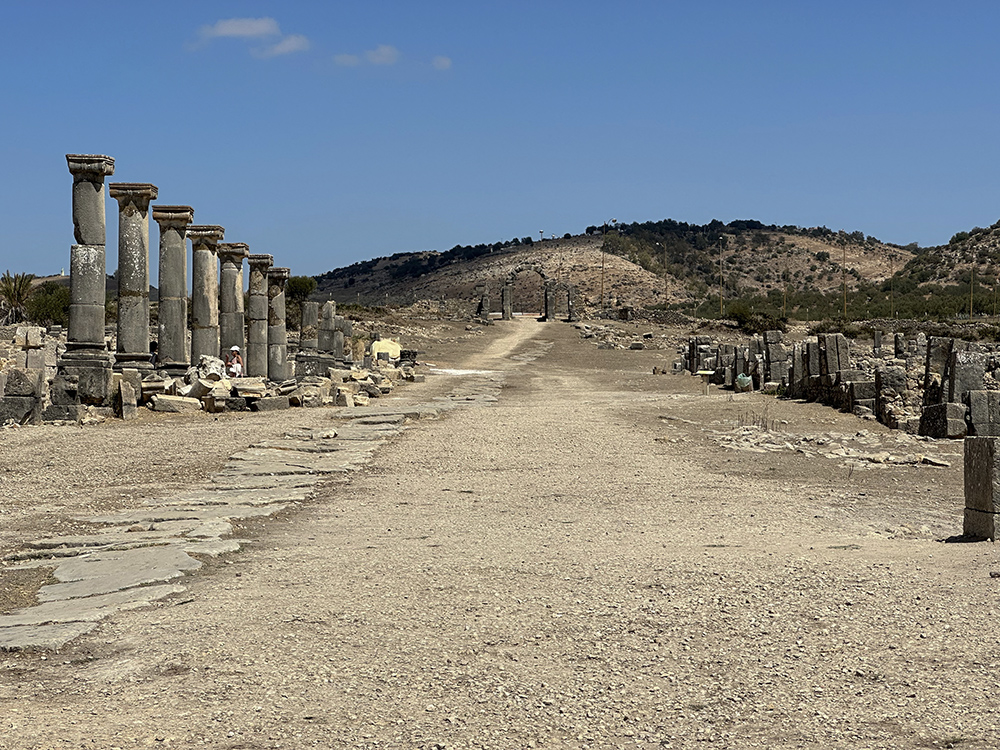
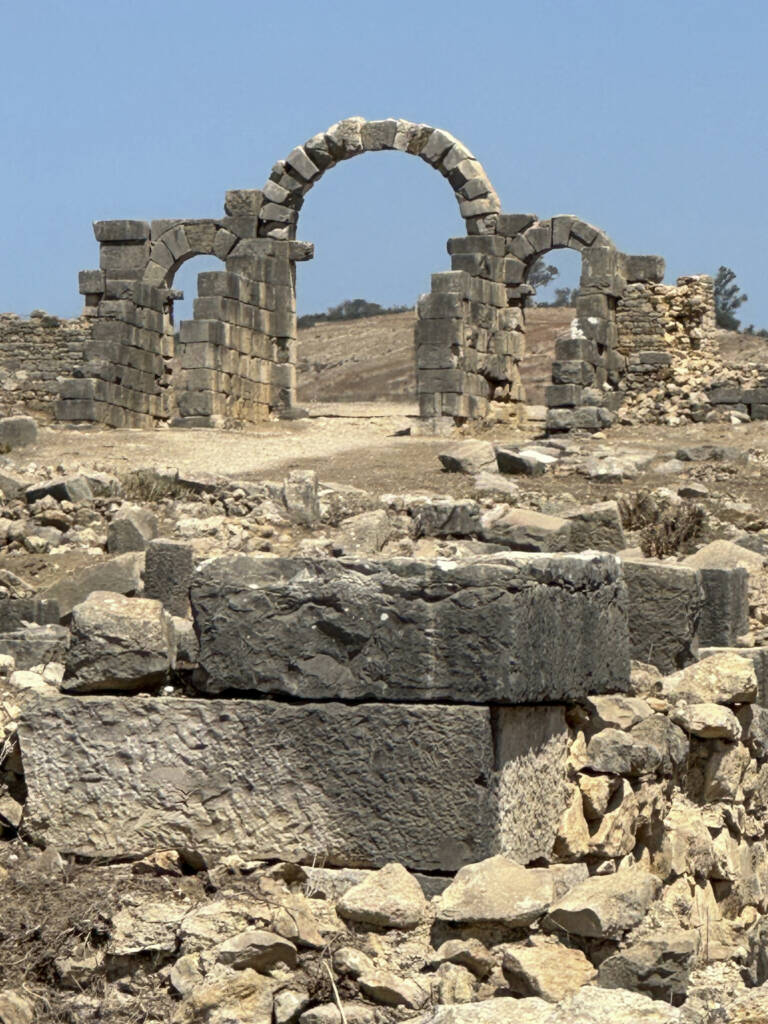
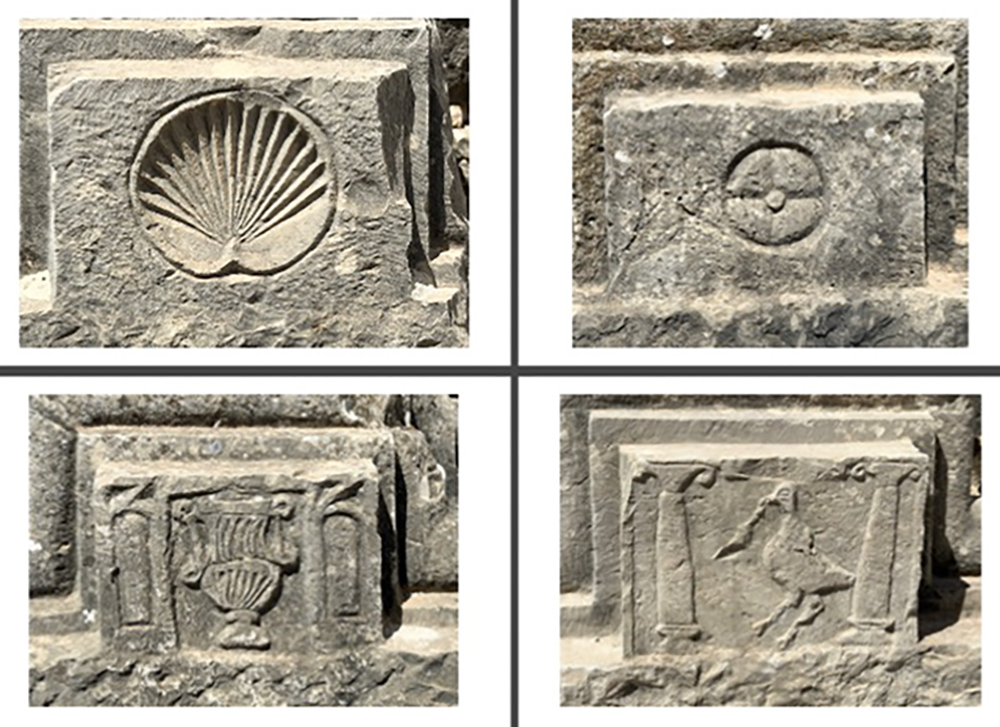
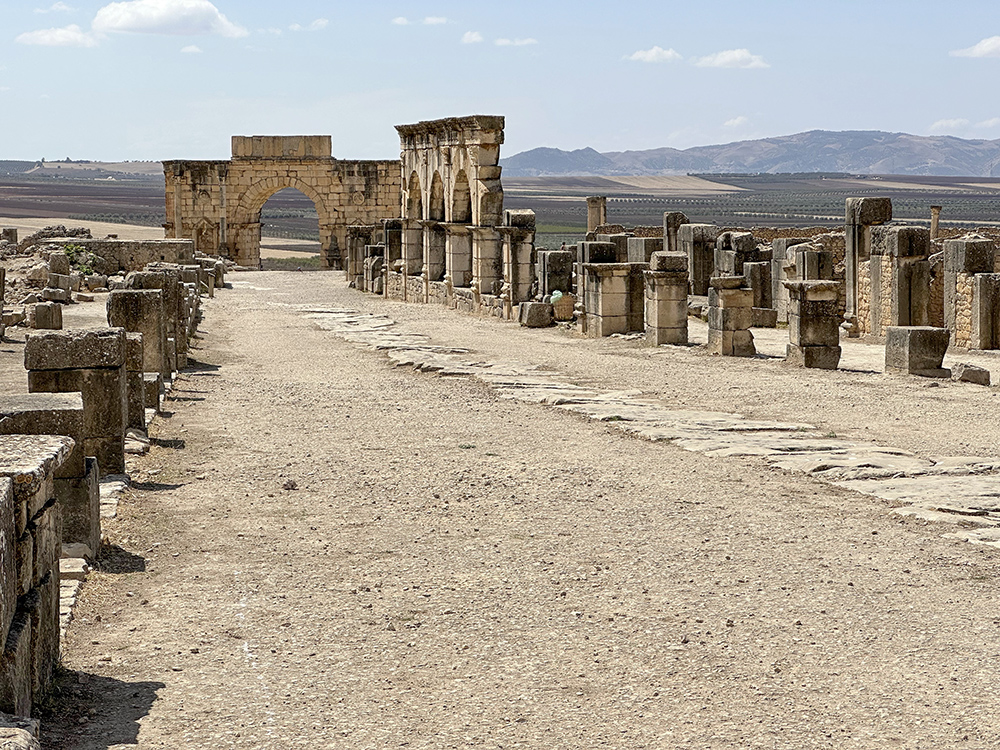
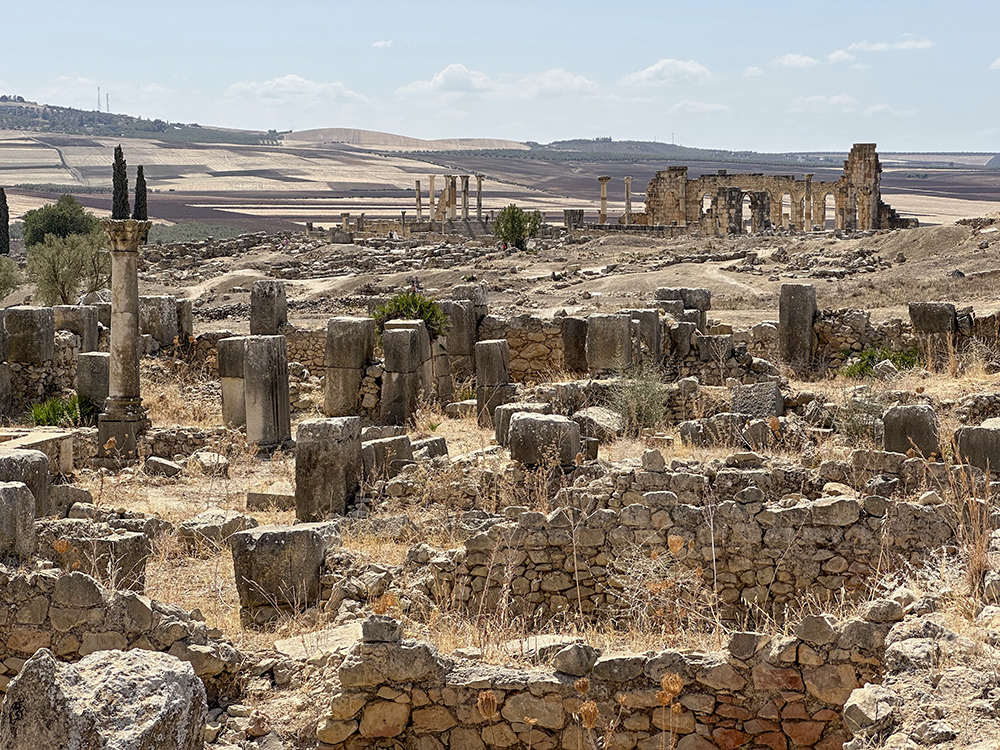
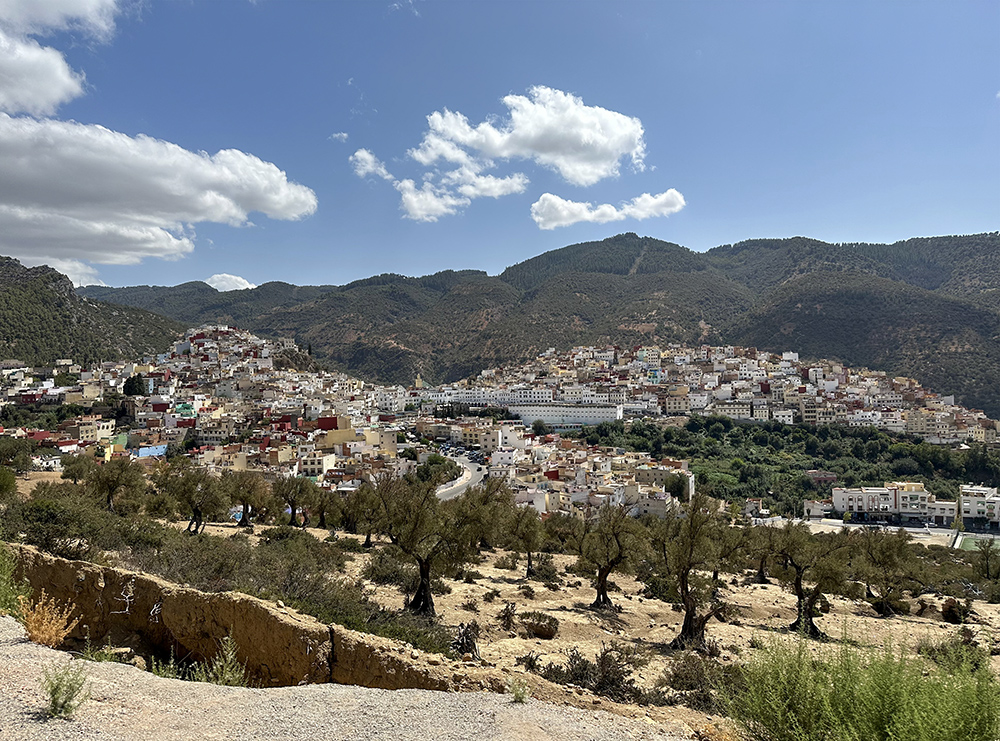
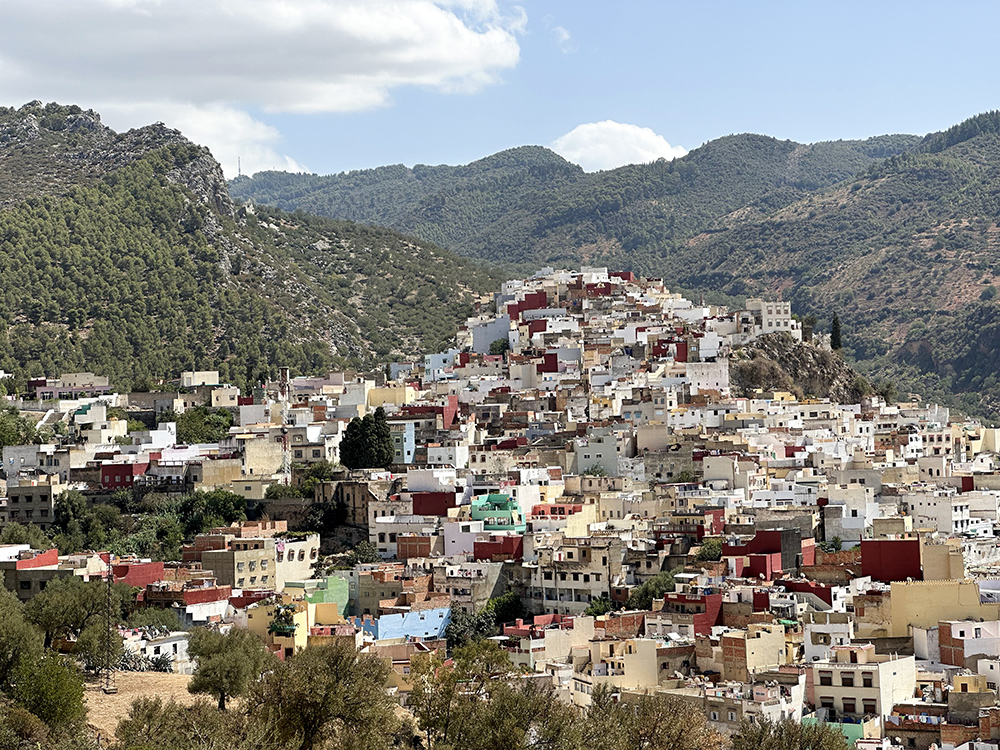
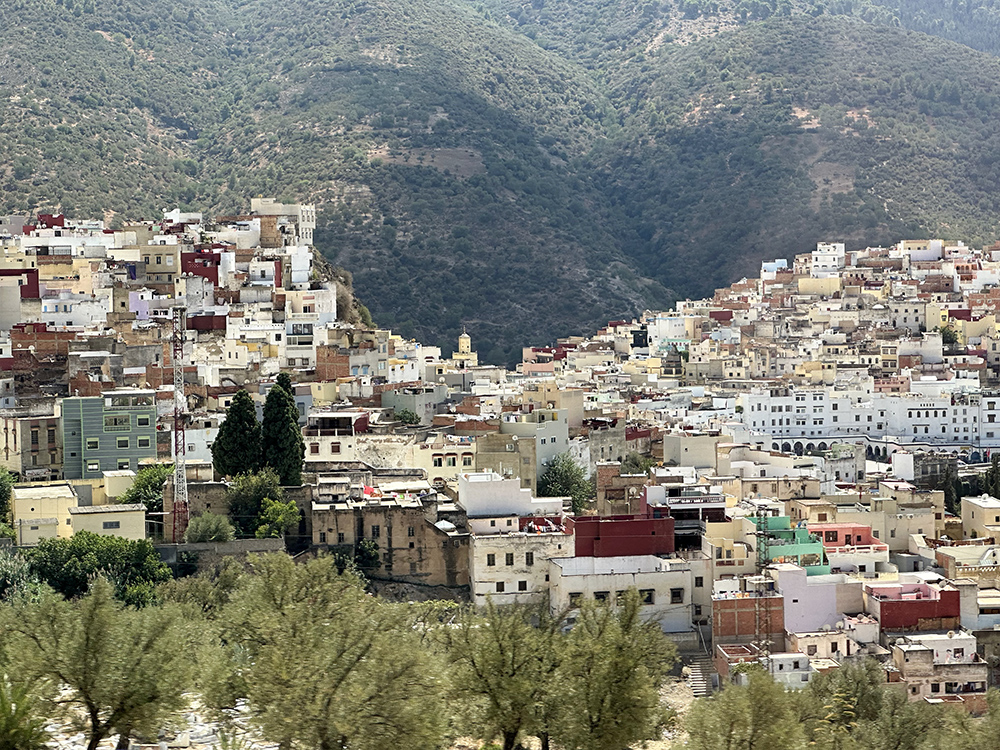
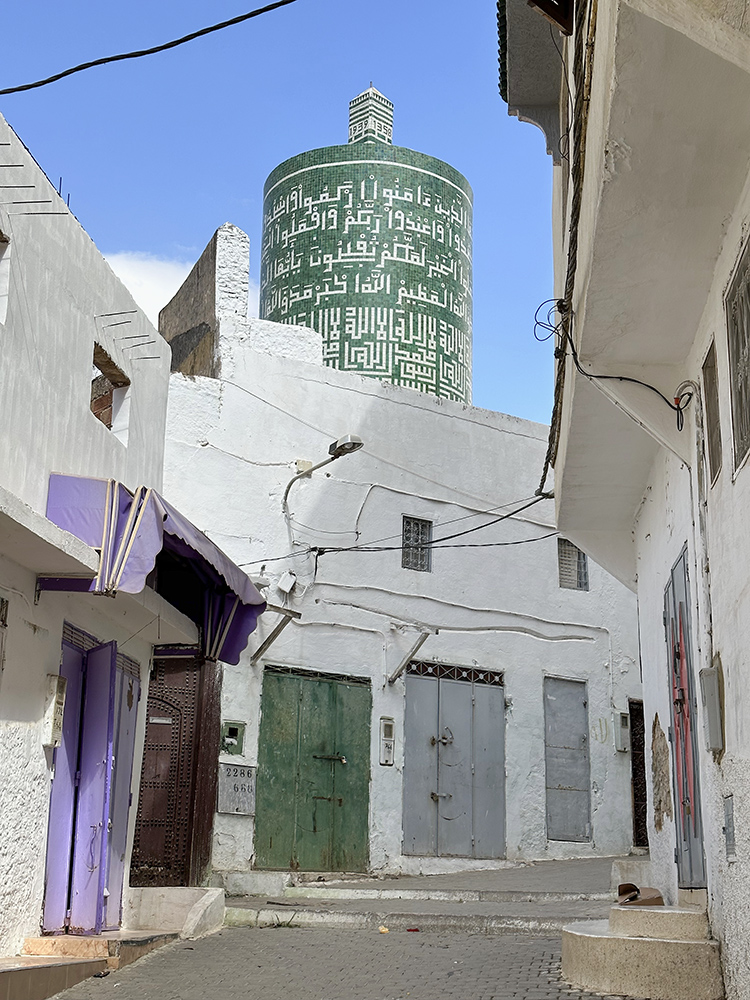
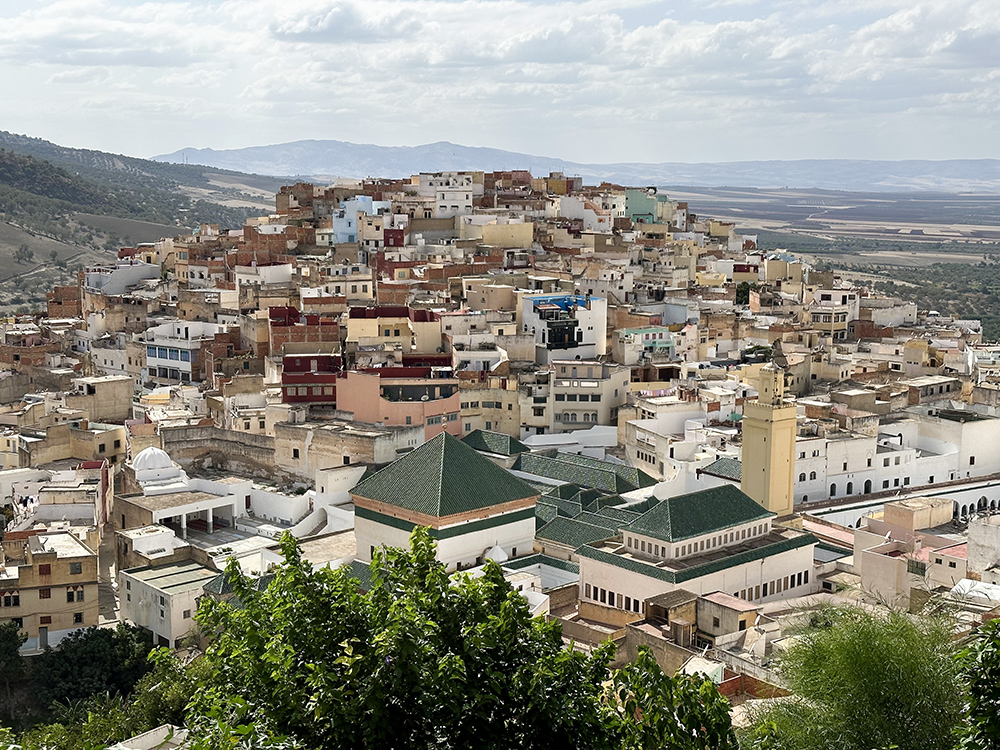
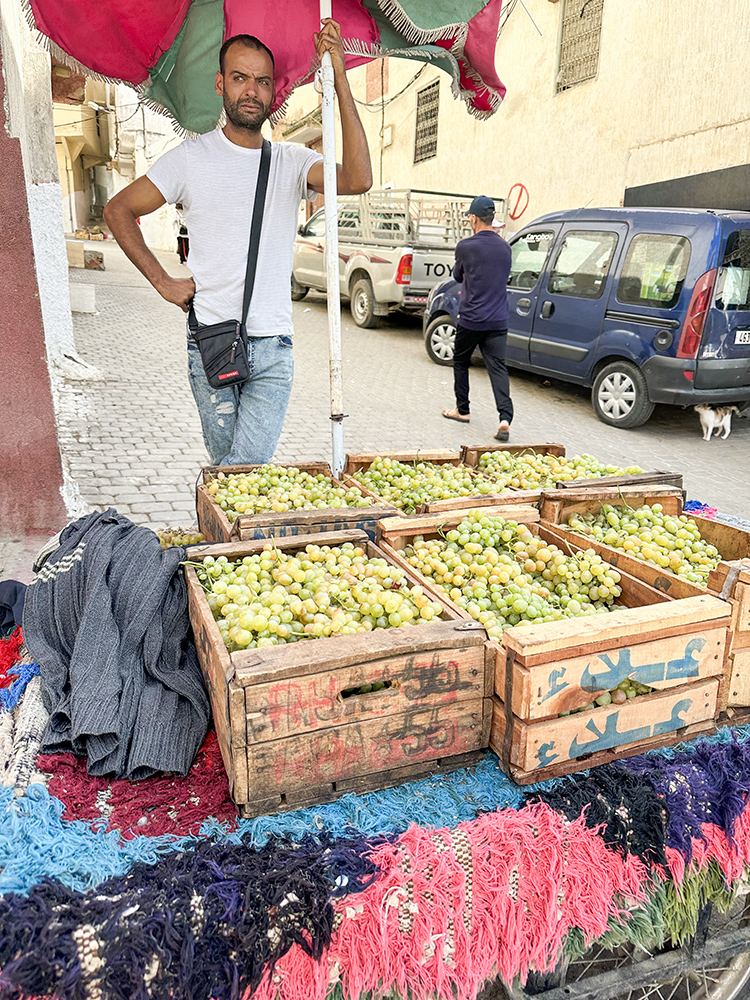
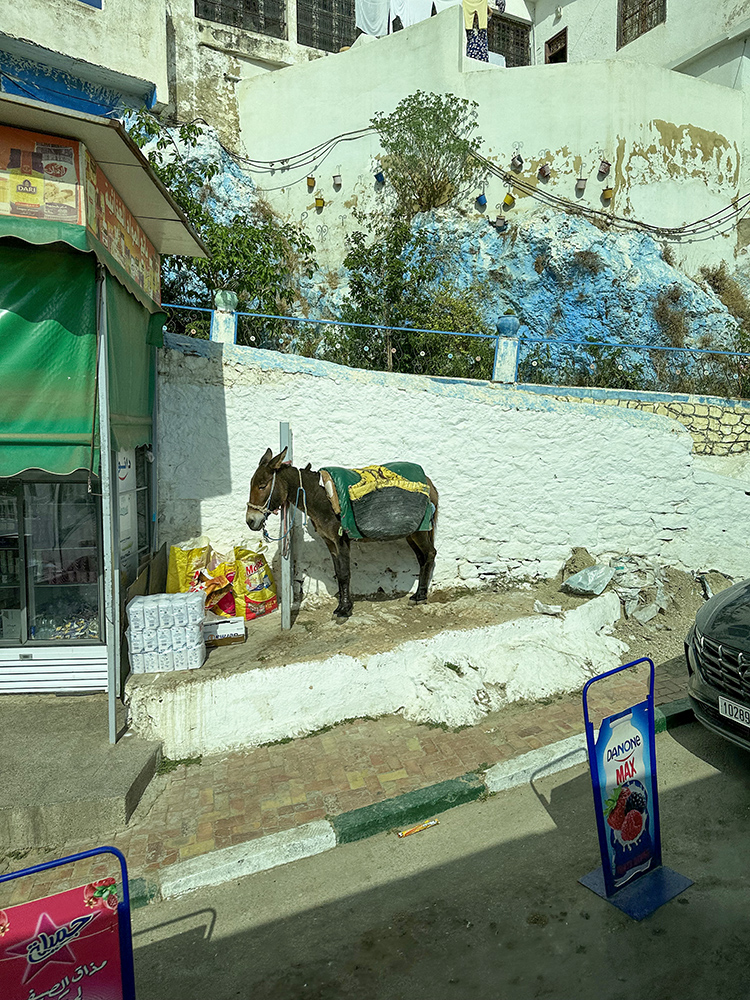
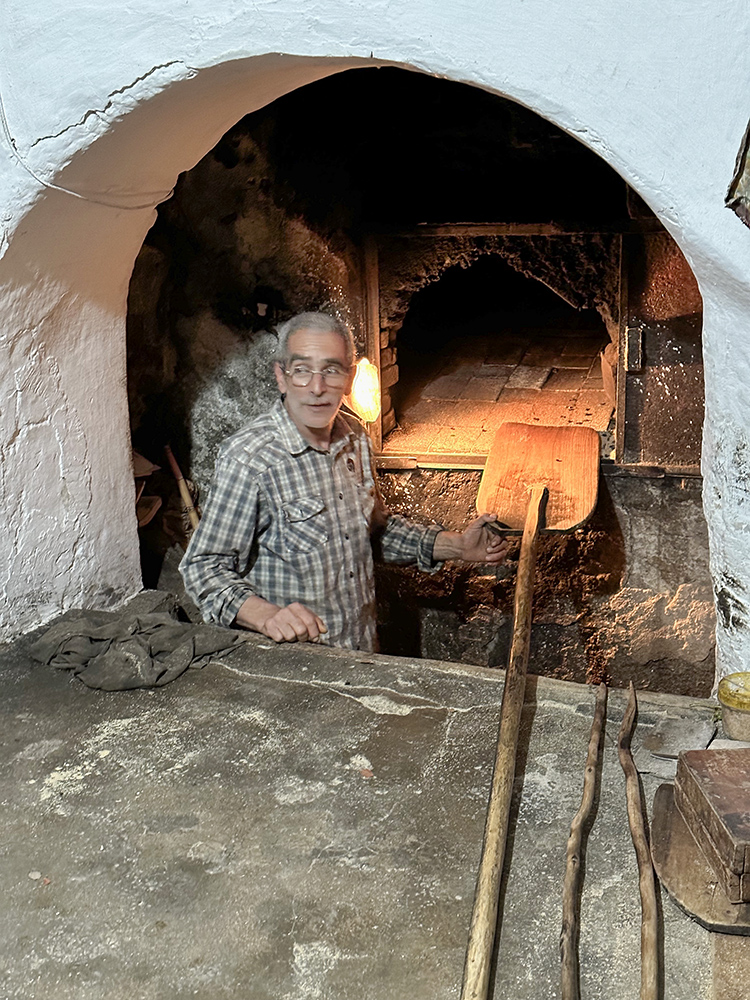
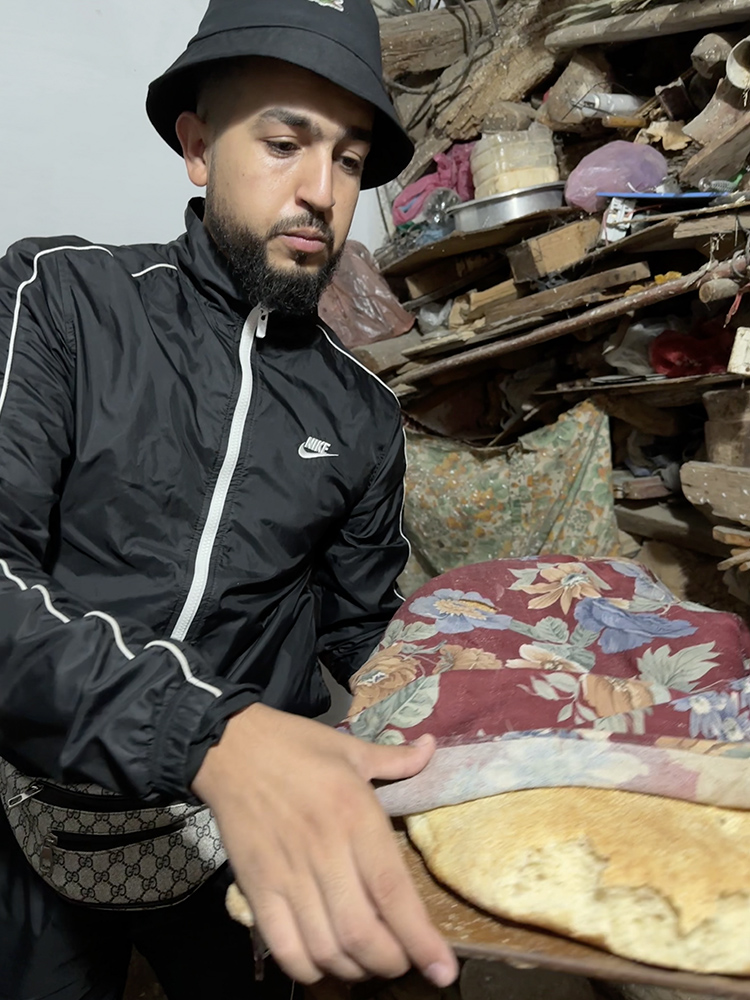
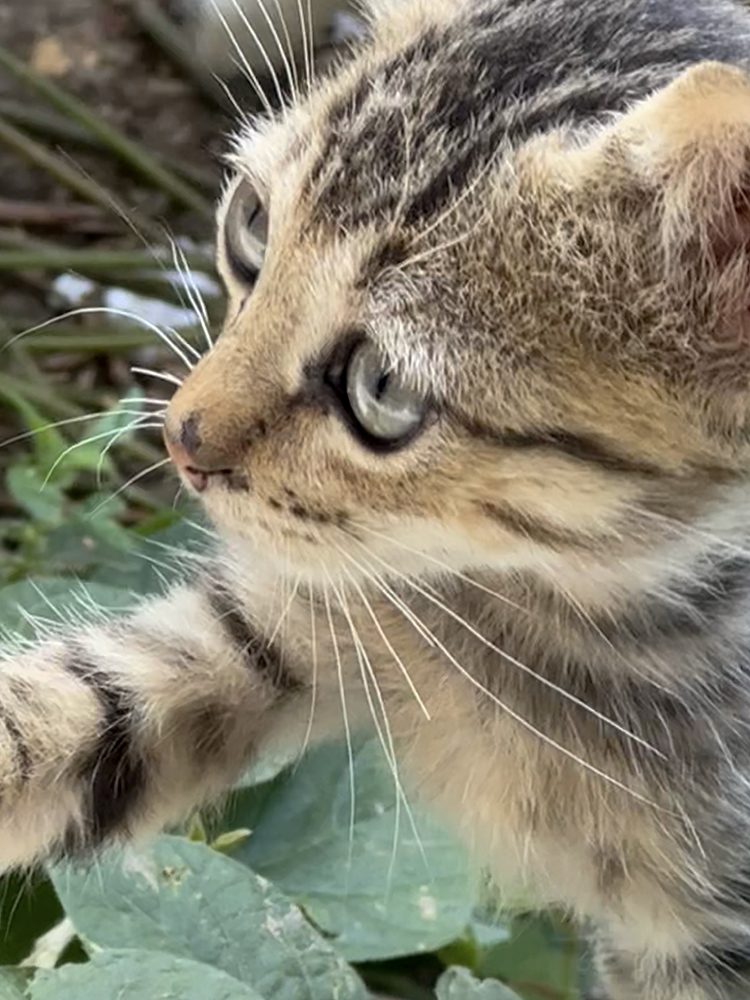

Fabulous. Thanks.
Fantastic photos and summary of our destinations in Morocco! Thank you so much for sharing. We are looking forward to more!
Thank you for sharing your stunning photos, beautiful organization and the narrative with historical significance of the sights. I am very appreciative of your work in compiling all of these details so beautifully and enjoy re-living the amazing trip!!